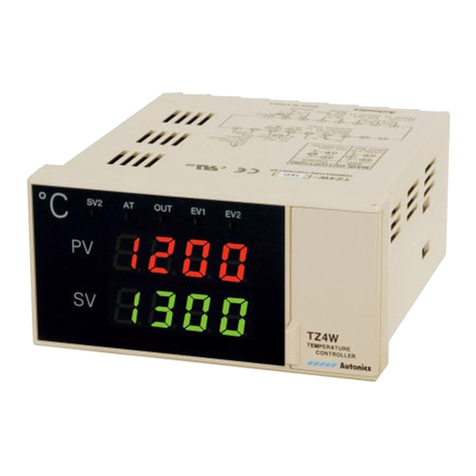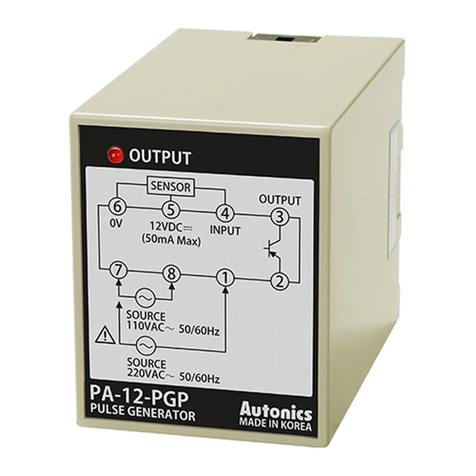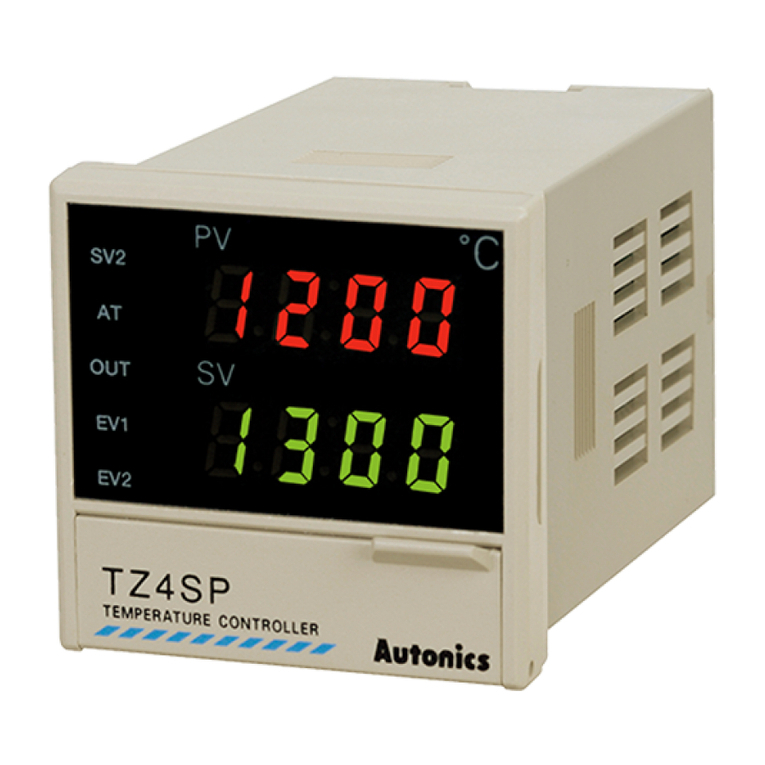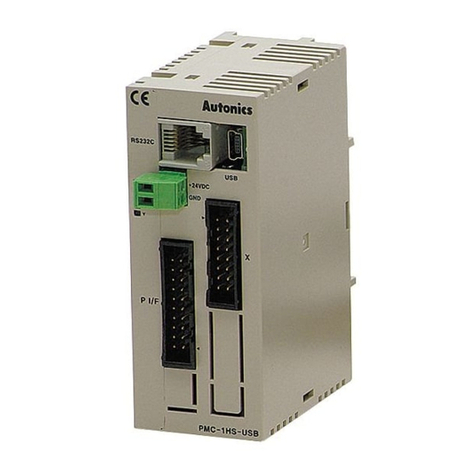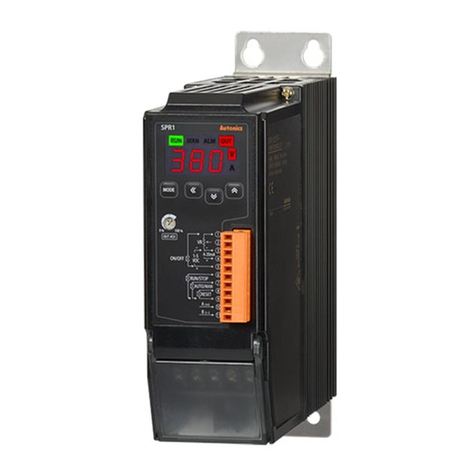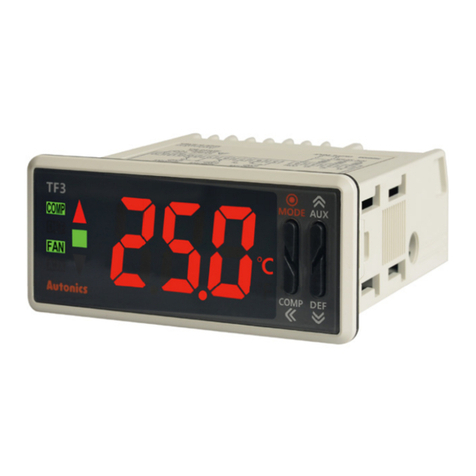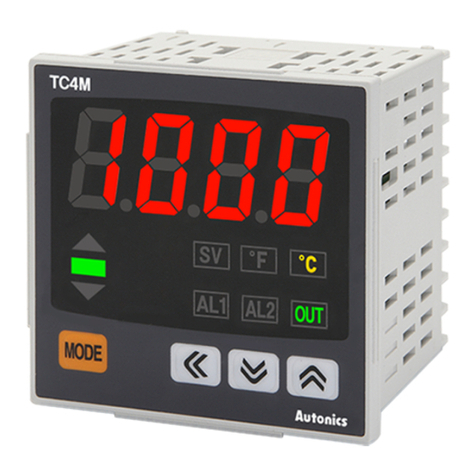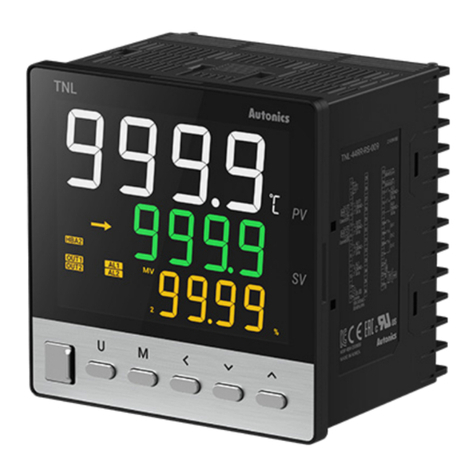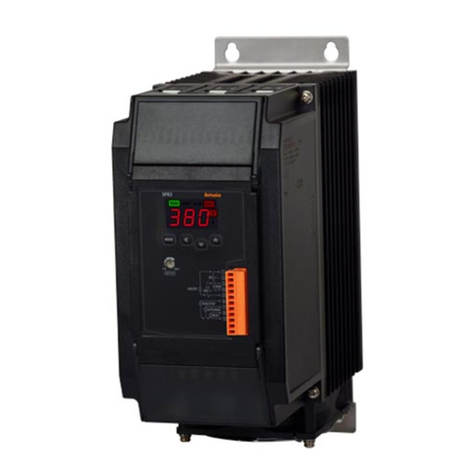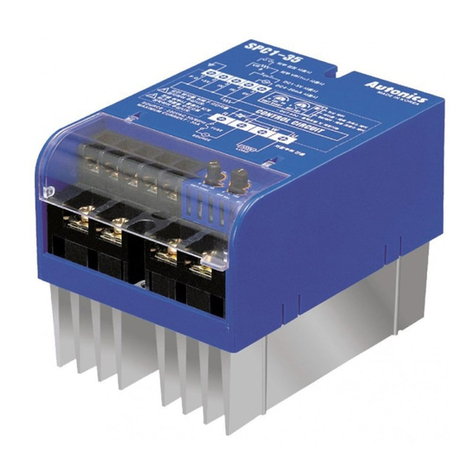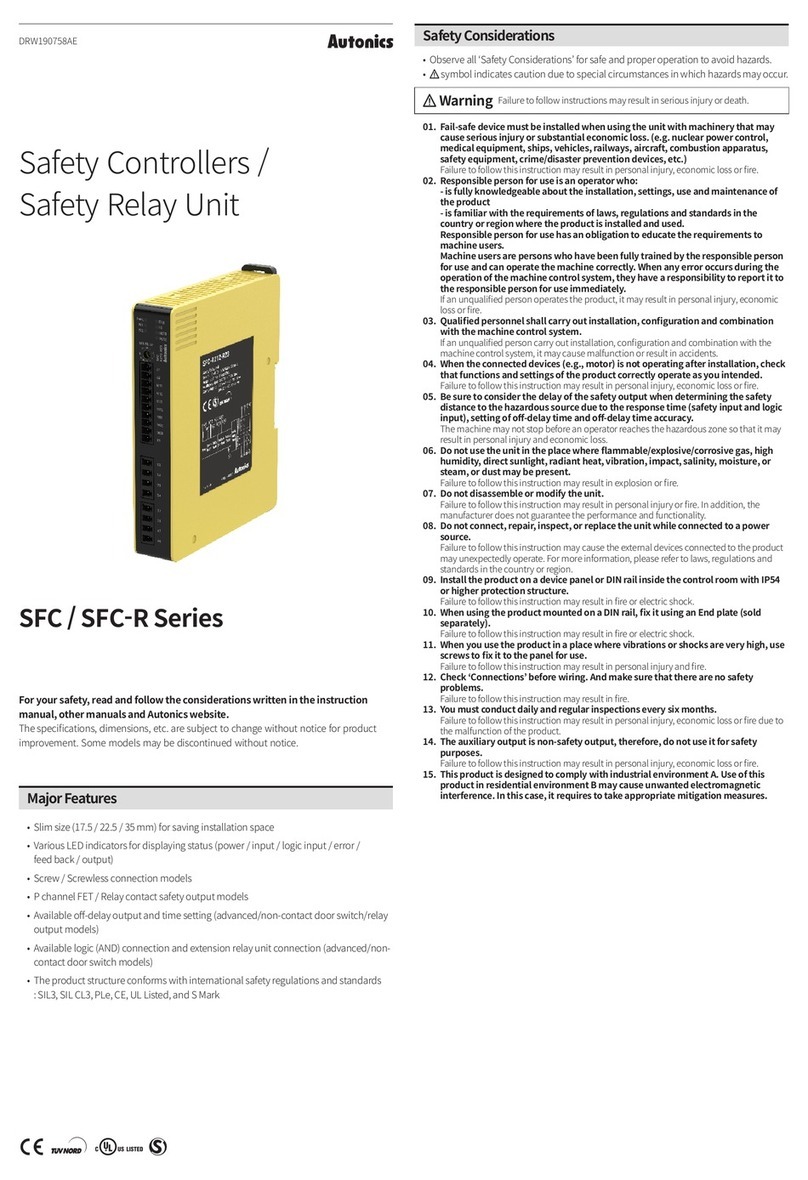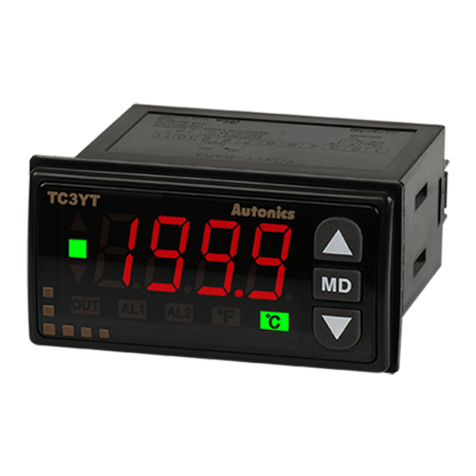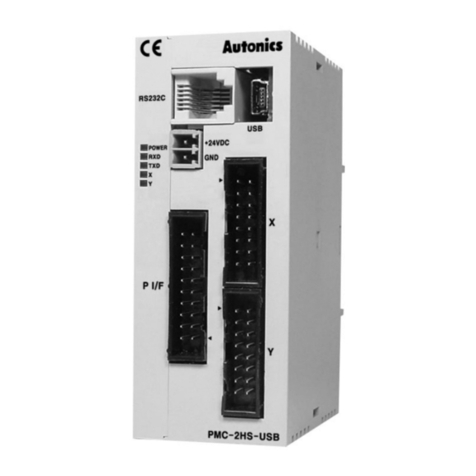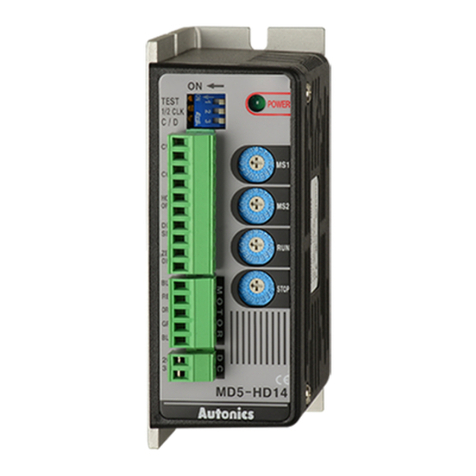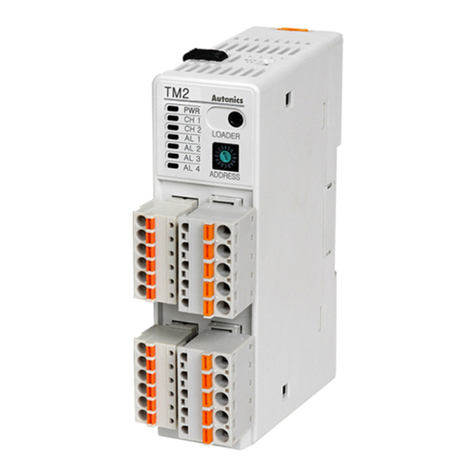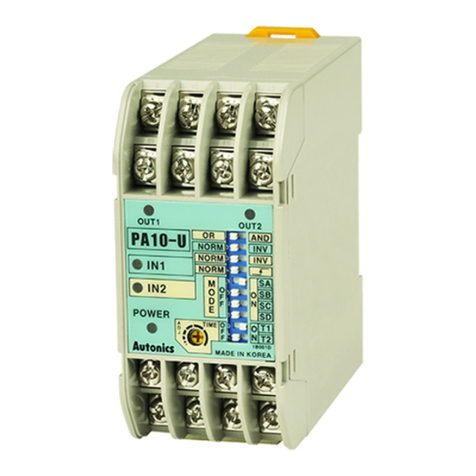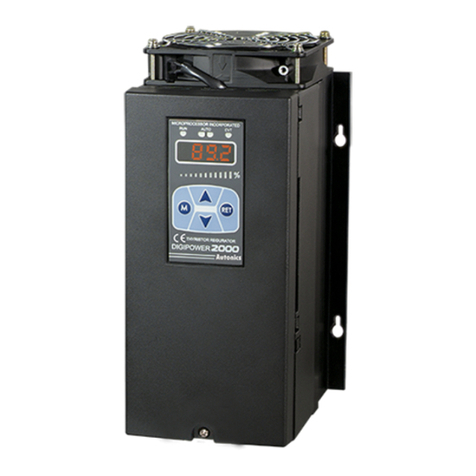
• Some parameters are activated / deactivated depending on the model or setting of
other parameters.
• For more information, refer to the manuals.
Parameter
LINE1 monitor setting LINE1
LINE2 monitor setting LINE2
LINE3 monitor setting LINE3
LINE4 monitor setting LINE4
Parameter copy PCOPY
Current time check TIM-C
Alarm history ALM-D
Parameter
Overcurrent alarm OC
Overvoltage alarm OV
Heatsink over heat alarm OTW
Heatsink over heat
protection alarm OTP
Heater break alarm HT-BK
Partial heater break alarm DLF-A
Load unbalance alarm UL
SCR error alarm SCR-A
Fuse break alarm FUSE
FAN error alarm FAN
Frequency error alarm FRQY
Alarm save ALM-S
Time setting T-SET
Parameter
Single-phase / 3-phase OP-S
Control input INPUT
Load type LOAD
Control mode OPER
Feedback control FB-S
Soft start / up / down SOF-T
Output high / low limit OUT-L
Output current limit C-LM
Input slope correction SLOPE
Input oset OFSET
Partial heater break DLF
Power distribution control PDC
RS485 communication RS485
Parameter reset RST-P
Reset check RST
Lock LOCK
Manual control input MANU
RUN
[M + ▲] 2 sec [M] 2 sec
RUN
[M] 2 sec [M] 2 sec
[A + ▼] 2 sec [M] 2 sec
[M + A] 2 sec [M] 2 sec
[M] 02) Auto
[A] 02)
Auto
[▲] Auto
[▼] Auto
[M + ▼] 2 sec
[M] 2 sec
7-9 terminal external
contact of control
input connector Auto
8-9 terminal external
contact of control
input connector Auto
[▼] 2 sec Alarm reset Auto
Reset switch of I/O
terminal Auto
01) This parameter is in program setting mode. It operates when manual control mode.
02) It is available when 3-phase setting as OFF at single-phase / 3-phase parameter setting of Program setting
mode.
03) Load type of LINE1 is selectable by the [▲] key in RUN mode or at setting check mode.
Load type of LINE 2 to 4 is selectable at setting check mode.
04) Press the [▼] key when LINE1 displays output and the input amount check is displayed with ashing.
05) In the event of system anomalies and alarms, RESET input restarts the power controller. (parameters are not
reset.)
Alarm
By setting parameters, you can set whether to use each alarm and relay output.
It can protect the load/fuse from overcurrent.
During alarm operation, OC in LINE1 ashes every 0.5 sec and the output stops (SCR
OFF).
• Operation condition: If the current higher than the LMT-C set value of the 2-1
overcurrent alarm is applied during the DLY-T set time of the 2-1 overcurrent alarm, an
alarm occurs. The set value is based on the RMS value.
It can protect the load from overvoltage.
During alarm operation, OV on LINE1 ashes every 0.5 sec and the output stops (SCR
OFF).
• Operation condition: If the voltage higher than the LMT-V set value of the 2-2
overvoltage alarm is applied during the DLY-T set time of the 2-2 overvoltage alarm,
an alarm occurs. The set value is based on the RMS value.
Heatsink over heat alarm
During alarm operation, OTW on LINE1 ashes every 0.5 sec and the output maintains.
• Operation condition: If the temperature of the heatsink maintains the temperature
above the TEMP set value of the 2-3 heatsink over heat alarm during the DLY-T set
time of the 2-3 heatsink over heat alarm, an alarm occurs.
During alarm operation, OTP on LINE1 ashes every 0.5 sec and the output stops (SCR
OFF).
• Operation condition: If the temperature of the heatsink maintains the temperature
above the TEMP set value of the 2-4 heatsink over heat protection alarm during the
DLY-T set time of the 2-4 heatsink over heat protection alarm, an alarm occurs.
Heater break alarm
During alarm operation, HT-BK on LINE1 ashes every 0.5 sec and the output stops (SCR
OFF).
• Operation condition: If the current below the LMT-C set value of the 2-5 heater break
alarm is over the LMT-O set output of the 2-5 heater break alarm during the DLY-T set
time of the 2-5 heater break alarm, an alarm occurs.
Partial heater break alarm
Partial heater break alarm is available for single phase control.
During alarm operation, DLF-A on LINE1 ashes every 0.5 sec and the output maintains.
• Operation condition: When using up to 6 parallel loads based on single-phase 1
channel, an alarm occurs if some loads (heaters) are disconnected.
An alarm occurs when the average current value of the load generated by scanning
the heater (load) is dierent from the currently measured average current value.
Load unbalance alarm
During alarm operation, UL on LINE1 ashes every 0.5 sec and the output maintains.
• Operation condition: If the unbalance rate over the LMT-P set value of the 2-7 load
unbalance alarm continues during the DLY-T set time of the 2-7 load imbalance alarm,
an alarm occurs.
• Unbalance rate (%) = (Max. line current - Min. line current) × 100
Average line current
E.g.) R-phase line current: 100 A, S-phase line current: 90 A, T-phase line current: 80 A,
Unbalance rate (%) = (100 - 80) × 100 = 22.22 %
90
SCR error alarm
During alarm operation, SCR-A on LINE1 ashes every 0.5 sec and the output stops (SCR
OFF).
• Operation condition: If the current over the LMT-C set value of the 2-8 SCR error alarm
is applied over the LMT-O set output of the 2-8 SCR error alarm during the DLY-T set
time of the 2-8 SCR error alarm, an alarm occurs.
Fuse break alarm
During alarm operation, FUSE on LINE1 ashes every 0.5 sec and the output stops (SCR
OFF).
• Operation condition: If the fuse break, load no-power, or load disconnection
continues during the DLY-T set time of the 2-9 fuse break alarm, an alarm occurs.
FAN error alarm
During alarm operation, FAN on LINE1 ashes every 0.5 sec and the output maintains.
• Operation condition: If the fan does not operate under the condition that the fan
should operate during the DLY-T set time of the 2-10 FAN error alarm, an alarm occurs.
• FAN operation condition: ON at heatsink (inner temperature) 40 ℃, OFF at 35 ℃
Frequency error alarm
During alarm operation, FRQY on LINE1 ashes every 0.5 sec and the output stops (SCR
OFF).
• Operation condition: If the power frequency of the load input remains out of 45 to 65
Hz during the DLY-T set time of the 2-11 frequency error alarm, an alarm occurs.
